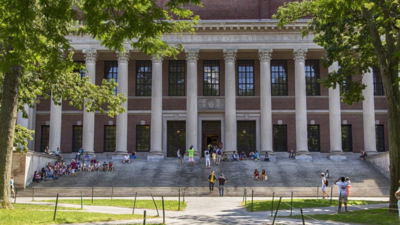Which colleges did Harvard President Alan Garber go to? – The Times of India

In the shadow of an unprecedented federal clampdown on higher education, Harvard University finds itself navigating a political maelstrom—its future entangled with debates on civil rights, academic freedom, and ideological reform. At the center of this institutional reckoning is Alan Michael Garber, a physician-economist whose decades of scholarly and administrative experience have culminated in Harvard’s presidency now marked by resistance to federal demands and defense of academic autonomy.
As the Trump administration freezes more than $2.3 billion in federal funding to Harvard—citing the university’s failure to comply with sweeping directives on antisemitism, admissions policy, and ideological bias—Garber’s leadership is under national scrutiny. But to understand the resolve with which he has confronted this challenge, one must examine the academic journey that shaped him: a path marked by intellectual duality, spanning economics and medicine, and anchored in the ethos of public service.
An uncommon academic trajectory
Born in 1955 in Illinois to Harry and Jean Garber in a Jewish household, Alan Garber grew up in the small city of Rock Island. His early life in the Midwest laid the groundwork for an academic career that would straddle disciplines and institutions at the highest level.
Garber’s first academic home was Harvard College, where he earned a Bachelor of Arts in economics in 1976. He remained at Harvard for his graduate studies, receiving both a Master of Arts and a Ph.D. in economics. Yet even as he pursued his doctoral work in economics at Harvard, Garber simultaneously enrolled at Stanford University School of Medicine, earning his Doctor of Medicine (M.D.) in 1983—a rare and formidable dual enrollment that underscored his intellectual ambition.
Following his M.D., Garber returned to Boston to complete his residency training in internal medicine at Brigham and Women’s Hospital, a Harvard Medical School affiliate, which he completed in 1986.
A career of interdisciplinary leadership
Garber’s academic career blossomed at Harvard, where his dual expertise positioned him as a rare interdisciplinary scholar. He is the Mallinckrodt Professor of Health Care Policy at Harvard Medical School, while also holding professorial appointments across the university: Professor of Economics in the Faculty of Arts and Sciences, Professor of Public Policy at the Harvard Kennedy School, and Professor in the Department of Health Policy and Management at the T.H. Chan School of Public Health.
In 2011, Garber was appointed provost of Harvard University, succeeding Steven Hyman. During his tenure as provost—which lasted until March 14, 2024—Garber played a key role in shaping academic and administrative strategy, often navigating complex political and institutional debates, including opposition to graduate student unionization and controversies surrounding industry affiliations.
His long-standing involvement in academia and governance made him a natural candidate to step in as interim president of Harvard following the resignation of Claudine Gay. On August 2, 2024, the Harvard Corporation confirmed Garber as the permanent president of the university, with a fixed term set to conclude at the end of the 2026–2027 academic year. He was formally installed on December 7, 2024, in a private ceremony held at the Harvard Art Museums’ Menschel Hall.
Leading amid crisis
Garber’s presidency quickly collided with national politics. In April 2025, the Trump administration announced a freeze on over $2.3 billion in federal support for Harvard—including $2.2 billion in grants and $60 million in contracts—citing the university’s refusal to implement federally mandated reforms. These included a rollback of diversity, equity, and inclusion (DEI) programmes, overhauls to admissions policies, audits of ideological bias, and disciplinary measures against campus protests.
The federal demands were delivered in a letter addressed directly to President Garber. But Harvard’s response, under his leadership, was unequivocal. In a public statement, Garber rejected the demands, asserting that the university “will not surrender its independence or relinquish its constitutional rights.” While acknowledging the importance of addressing antisemitism, Garber emphasized that many of the administration’s conditions amounted to “direct governmental regulation of the ‘intellectual conditions’ at Harvard.”
A presidency defined by principle
Garber’s stance has placed him at the forefront of a broader confrontation between academia and political power. As other elite institutions face similar scrutiny, Garber’s refusal to capitulate has drawn both praise and political ire. His legal team has argued that the federal government is exceeding its authority, while faculty and alumni have rallied behind his defense of academic freedom.
From his formative years in Illinois to his dual doctorates in economics and medicine, from his leadership as provost to his current role as president, Alan Garber’s career has been built on analytical rigour and institutional integrity. Now, as he steers Harvard through an unprecedented period of external pressure and internal reflection, Garber is not merely a steward of tradition—he is a test case for the resilience of American higher education under fire.
















